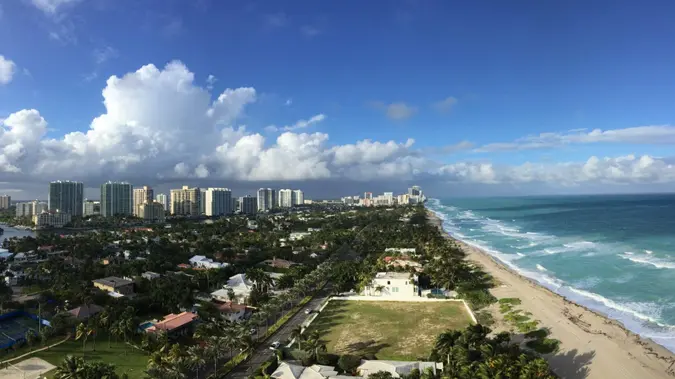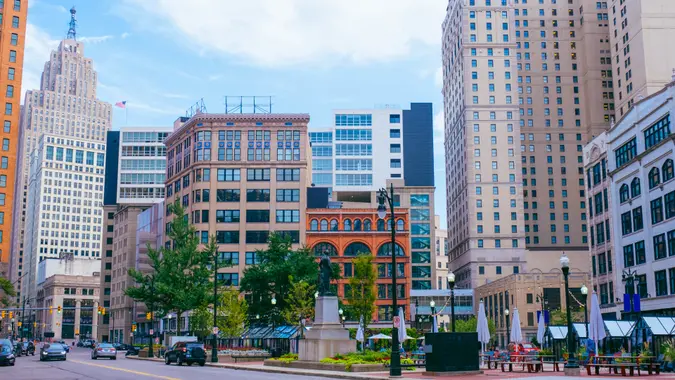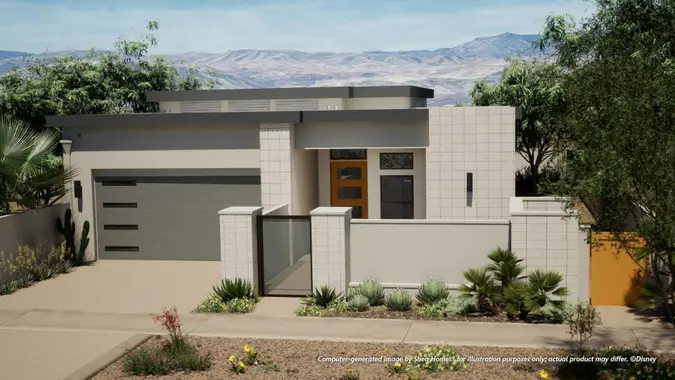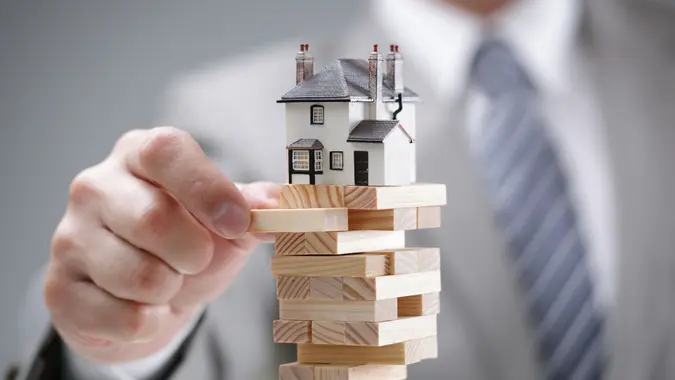Mark Cuban: This Will Be the Top Housing Affordability Issue — What You Can Do About It

Commitment to Our Readers
GOBankingRates' editorial team is committed to bringing you unbiased reviews and information. We use data-driven methodologies to evaluate financial products and services - our reviews and ratings are not influenced by advertisers. You can read more about our editorial guidelines and our products and services review methodology.

20 Years
Helping You Live Richer

Reviewed
by Experts

Trusted by
Millions of Readers
In December 2024, Mark Cuban posted on Bluesky, calling out what he believes will become one of the top challenges to housing affordability. “Home insurance in areas hit by repetitive disasters is going to be the number one housing affordability issue over the next four years,” he said. “And possibly going into the midterms. More so that interest rates. Florida in particular is going to have huge problems.”
Now, almost a month into 2025, Cuban’s predictions are proving correct as we see the devastation that the California wildfires are causing. The fires have provoked questions of not only how people will rebuild, but how homeowners will be able to afford home insurance in areas of the country prone to natural disasters.
How Insurance Companies Pay Out Massive Natural Disaster Claims
Large natural disasters can result in millions or billions of dollars’ worth of claims. Mordechai Breier, managing partner at Insurance Litigation Group, explained that insurance companies rely on claims reserves, reinsurance and sometimes government-backed programs for the funding needed to pay out such large claims. “However, this process is often slowed by claims adjustments, litigation and sometimes claims denials,” Breier said.
Since paying out the claims resulting from large-scale disasters is so expensive. Insurers may increase home insurance rates to help replenish their reserves. “In Florida, for example, premiums have increased as carriers adjust to the rising number of claims and losses from hurricanes, despite having the data and tools to forecast these risks,” Breier explained.
How Natural Disasters Are Limiting Homeowners Insurance Options
Max Dugan-Knight, climate data scientist at Deep Sky, explained that some insurance companies are no longer offering home insurance in these high-risk areas at all. “Insurance prices follow risk and risk is only moving in one direction in California and Florida due to climate change,” he said.
In 2024, State Farm dropped more than 2,000 homeowners in Los Angeles areas including Brentwood, Calabasas, Hidden, Hills and Monte Nido. State Farm also dropped about 1,600 policies in Pacific Palisades. “It is clear that there is a level of risk insurance companies will not accept and they will simply stop offering coverage,” Dugan-Knight explained. “This can leave homeowners stranded.”
The California FAIR plan may be an option for California residents who can’t get fire insurance through a traditional insurance company, but the Los Angeles wildfires will likely also have a significant impact on the FAIR plan. “Its funds were dangerously low even before these wildfires, so questions remain about where its future funding will come from,” Dugan-Knight said. “Private insurers are required to fund it and it is very close to running out of money. If private insurers are required to put more money in, they will almost certainly raise rates elsewhere to cover their losses.”
As a result, homeowners in less risky areas are subsidizing insurance for homeowners living in the higher-risk areas of the state. This situation is reflected in California, Florida and throughout the country. “Government policy initiatives like the FAIR plan do not change the actual level of risk; they just move around who pays for it,” Dugan-Knight explained.
How Natural Disasters Might Affect Your Home Insurance Rates
The effects of natural disasters on home insurance rates can be easily seen in states like California and Florida. Insurance companies use very similar processes to assess risk and respond to claims in both states, Breier explained. “In Florida, insurers are already limiting coverage, imposing stricter filing deadlines and capping payouts,” he said. If insurers struggle to meet the increased cost of claims, such as those resulting from the Los Angeles wildfires, then homeowners might face higher premiums, more exclusions and more difficulty in obtaining home insurance.
Even if you’re not in a high-risk area, your insurance rate might be impacted. Dugan-Knight predicted that the Los Angeles wildfires will accelerate forces that were already in the works. As insurers have seen more frequent and widespread losses each year, their price increases haven’t kept up with the increasing climate risk. That’s partially because it’s extremely difficult to predict climate change’s impact on natural disasters. “These trends are advancing faster than scientists expected,” he said. “So, pricing the risk correctly is no small feat and at the moment insurers are not keeping up.”
According to Dugan-Knight, disasters in one state can affect home insurance in other states. As insurance companies lose money in one state, they may need to raise prices in another state to make up for the loss. For example, Floridians might be an easy target for higher rates because they face significant natural disaster risk. “Florida homeowners may be less likely to just go without insurance if rates rise because they have seen the risks up close and personal. This makes it easier for insurers to raise rates,” he explained.
How To Save Money on Home Insurance in High-Risk Areas
Homeowners in areas at high risk of natural disasters face climbing insurance costs and paying for insurance is already a significant challenge for many. Breier explained that in areas like Florida, homeowners may have more limited coverage options and may need to shop around for the best policy.
While homeowners can potentially increase their deductible to lower their premiums, they will face a higher out-of-pocket cost if they need to file a claim.
Dugan-Knight suggested that homeowners explore ways to lower their home’s risk of damage from natural disasters. Home insurance providers will often offer information on what actions a homeowner would need to take before the company would consider lowering a rate.
For homes facing fire risk, such precautions might include installing fire-resistant roofing, clearing trees and vegetation away from the home or using fire-resistant landscaping materials.
“As unpopular as it is to say, the honest answer to how to cope with these risks and insurance costs may ultimately be to move,” Dugan-Knight said. “There are parts of the country that are becoming near-uninsurable and again, the risk is only moving in one direction.”
More From GOBankingRates
- Nearly 1 in 3 Americans Hit by a Costly Holiday Scam, Norton Survey Shows -- How To Avoid This
- Here's What the Average Social Security Payment Will Be in Winter 2025
- How Middle-Class Earners Are Quietly Becoming Millionaires -- and How You Can, Too
- The Easiest Way to Score $250 for Things You Already Do
 Written by
Written by  Edited by
Edited by 

























